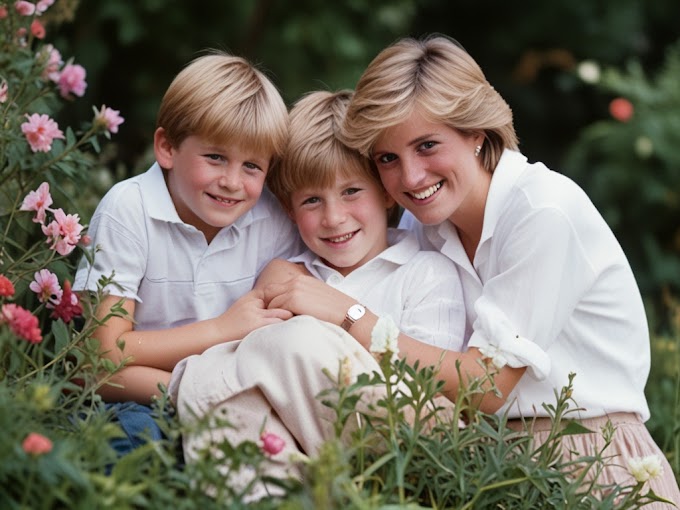As the heir apparent to the British throne, William, Prince of Wales, skillfully balances the responsibilities of royalty with his roles as a husband, father, and advocate for key causes. This exploration delves into the life of a man destined to be king, yet grounded in modern values and relatable challenges.
Early Life and Education
Born on June 21, 1982, William Arthur Philip Louis entered the world as the eldest son of Charles, then Prince of Wales, and Diana, Princess of Wales. His journey from a young prince to a future monarch has been shaped by a blend of tradition and contemporary experiences.
William's education began at Eton College, preparing him for the rigors of royal life. His time at the University of St Andrews not only expanded his academic horizons but also led him to his future wife, Catherine Middleton. This period allowed William to form friendships and explore interests beyond his royal duties.
After university, William embraced military service, training as an officer at the Royal Military Academy Sandhurst. This experience instilled in him a sense of discipline and leadership that would prove invaluable in his future roles.
Family Life: A Devoted Husband and Father
On April 29, 2011, millions worldwide watched as William married Catherine Middleton in a grand ceremony at Westminster Abbey. Their union marked the beginning of a new chapter in royal history, characterized by mutual support and shared values.
The Prince and Princess of Wales are devoted parents to their three children:
- Prince George – Eldest son, born in 2013
- Princess Charlotte – Daughter, born in 2015
- Prince Louis – Youngest son, born in 2018
William and Catherine embrace a hands-on parenting approach, striving to provide a stable, loving environment for their children while fulfilling their royal duties. This balance showcases William's commitment to both family and country, endearing him to the public as a relatable figure despite his royal status.
Royal Duties and Charitable Work
As Prince of Wales, William has taken on increasing responsibility within the royal family. He represents the monarchy at official events and state visits, embodying the dignity of the crown while maintaining an approachable demeanor.
William’s charitable work spans a range of causes, with particular focus on:
- Environmental Conservation
- Mental Health Awareness
- Homelessness
His launch of the Earthshot Prize demonstrates a forward-thinking approach to encouraging innovative solutions to climate change, positioning him as a leader in the fight against global warming.
Leadership Style: Approachable and Compassionate
William's leadership style sets him apart as a gentle yet effective future monarch. His down-to-earth demeanor resonates with people from all walks of life, and his empathy shines through in his work with mental health initiatives and support for vulnerable populations.
He navigates complex political and social situations with remarkable tact, earning respect both at home and abroad. This diplomatic skill, combined with his genuine concern for societal issues, paints a picture of a future king who will be both compassionate and effective in his reign.
Physical Attributes and Public Image
A Regal Presence: While personal qualities are paramount, public interest often extends to a royal's appearance.
- Height: William stands at approximately 6 feet 3 inches (1.91 meters).
- Appearance: Known for his warm smile and resemblance to his mother, Princess Diana.
- Style: Favors classic, well-tailored attire befitting his royal status.
William's physical presence complements his role, projecting an image of strength and reliability.
The Path to the Throne
William's journey towards kingship is a carefully managed progression. Following his father’s accession as King Charles III, William assumed increased responsibilities and the title of Prince of Wales. This transition period allows him to grow into his future role while supporting his father’s reign.
His ongoing preparation includes diplomatic engagements and constitutional studies, ensuring William will be well-equipped to take on the mantle of monarchy when the time comes. His approach reflects a deep respect for tradition coupled with an understanding of the evolving role of the monarchy in modern society.
Financial Aspects and Media Presence
Wealth and Responsibility: Public interest in the royal family often extends to their finances.
- Source of Income: Primarily from the Duchy of Cornwall, now under King Charles III's management.
- Net Worth: Estimated to be substantial, though exact figures are not publicly disclosed.
- Philanthropy: A significant portion of wealth directed towards charitable causes.
William's approach to royal finances emphasizes responsibility and giving back to society.
A Prince for the Modern Age
William, Prince of Wales, embodies the ideal of a modern royal – deeply committed to service, family-oriented, and attuned to the challenges facing society. As he continues his journey towards the throne, William's gentle leadership, compassionate nature, and dedication to making a positive impact position him as a monarch-in-waiting who can bridge tradition and progress.
His story is one of growth, responsibility, and unwavering commitment to both his family and his future subjects. As the world watches, William continues to carve out his own path, promising a reign marked by empathy, environmental stewardship, and a deep connection to the people he will one day serve as king.











